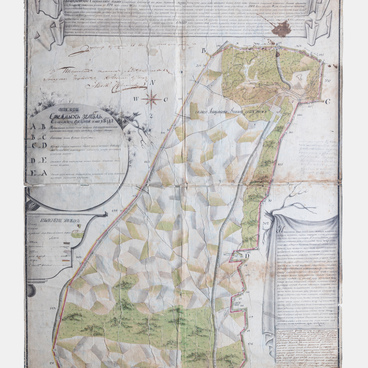The Ulyanovsk Regional Museum of Local Lore named after Ivan Goncharov presents a stutzen hunting rifle made in the second quarter of the 19th century. It was a muzzle-loading firearm produced in the 17th–19th centuries.
The name comes from the German word stutzen meaning “to cut short”, “to shorten”. The weapon consists of a stock, a barrel, and a flintlock. The wooden stock is massive with a brass butt plate and is decorated with carvings. The barrel of the stutzen rifle is triangular with a sight. The trigger area is decorated with an engraved floral pattern, gold inlays and the inscription Petersburg. Compared to smoothbore muskets, the stutzen rifle had a shortened barrel and a bigger caliber.
Until the mid-19th century, rifles were not widely used in the army, because muskets were the main gun power, and rate of fire was much more important than accuracy or range. Right from the start, the stutzen rifle had a disadvantage compared to smoothbore muskets: its rate of fire was several times lower, since the bullet had to fit very tightly in the barrel, which took several minutes. The rifle was loaded using wads; sometimes the bullet was simply wrapped in cloth. Then the bullet had to be driven into the barrel using a ramrod.
Napoleon is known to have said that watching riflemen shoot was sheer torture. The low rate of fire and high cost of stutzen rifles (due to the complexity of manufacturing rifled barrels) limited their distribution. Therefore, until about the 1840s, only the best shooters and some special units were armed with rifles in armies of most major powers, including Russia. For example, in the Russian Lifeguard Regiments, the Finnish 3rd Rifle Battalion was fully armed with stutzen rifles. In the British army, the 95th Rifle Regiment — Rifles for short — was entirely armed with rifles, which contrasted them with all other soldiers armed with muskets.
The problem of the rate of fire of muzzle-loading rifles was largely solved in the mid-19th century with the invention of special bullets. Some of them coincided in shape with the cross-section of the barrel bore and, when loaded, fit the barrel easily. Others were smaller in caliber than the bore, but when loaded or fired, they spread out to the sides and ensured a tight fit to the walls of the barrel (obturation). The most advanced of these bullets was the Minié ball. Thanks to it, the rate of fire of rifled weapons became equal to the corresponding rate of smooth-bore ones.


